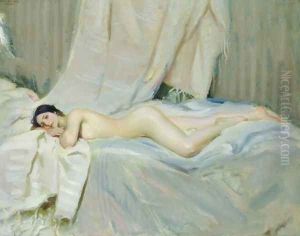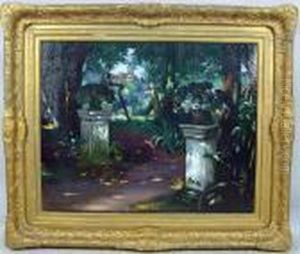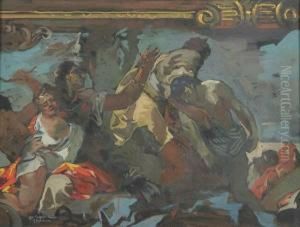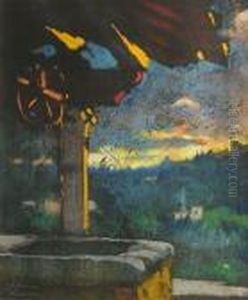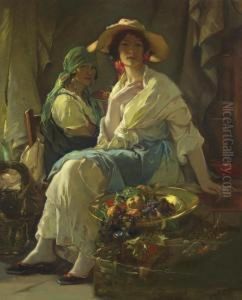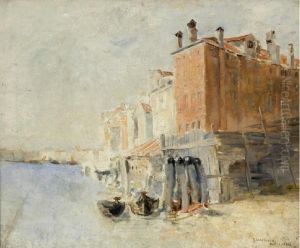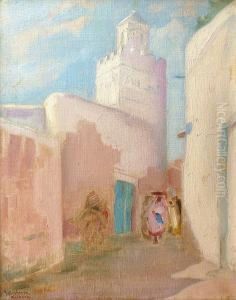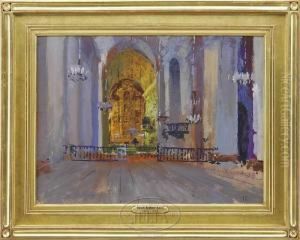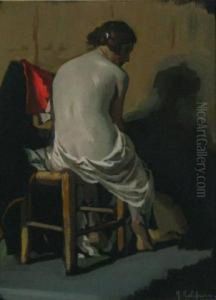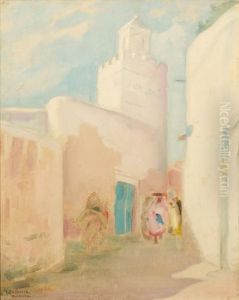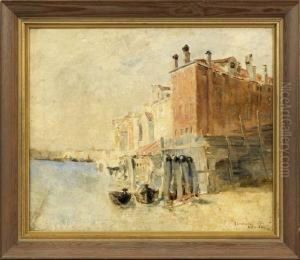Julius C. Rolshoven Paintings
Julius Caesar Rolshoven was an influential American painter known for his contributions to the Impressionist movement, particularly within the American Southwest and Europe. Born on October 28, 1858, in Detroit, Michigan, Rolshoven exhibited an early interest in art, which led him to pursue formal education in the United States and Europe. He studied at the Stuttgart Royal Arts Academy in Germany and later at the Académie Julian in Paris, France, where he was influenced by the burgeoning Impressionist movement and its masters.
Rolshoven's early work consisted of portraits and genre scenes, but his style evolved significantly after he moved to Florence, Italy, in the late 19th century. There, he became captivated by the Italian landscape and light, elements that became central to his Impressionist works. His time in Italy was punctuated by visits back to the United States, where he also painted the rugged landscapes of the American Southwest, particularly New Mexico. The distinctive light and color of this region deeply influenced his palette and subject matter, leading to a body of work that celebrated the unique beauty of the American landscape.
In 1916, Rolshoven established a studio in Santa Fe, New Mexico, becoming an integral part of the burgeoning art scene there and a member of the Santa Fe art colony. His contributions helped to establish Santa Fe as a significant center for American art. Rolshoven's works from this period are characterized by vibrant colors, dynamic brushstrokes, and a deep appreciation for the natural beauty and cultural richness of the Southwest.
Throughout his career, Rolshoven was recognized for his artistic achievements, receiving numerous awards and honors. He was a member of prestigious art organizations, including the National Academy of Design and the Salmagundi Club. Despite his success, he continued to travel extensively, seeking inspiration across the United States and Europe until his death on December 3, 1930, in New York City.
Rolshoven's legacy is preserved in his contributions to American Impressionism and his unique interpretations of the landscapes and peoples of the American Southwest and Italy. His works are held in several important collections and continue to be celebrated for their technical mastery and emotive power.
